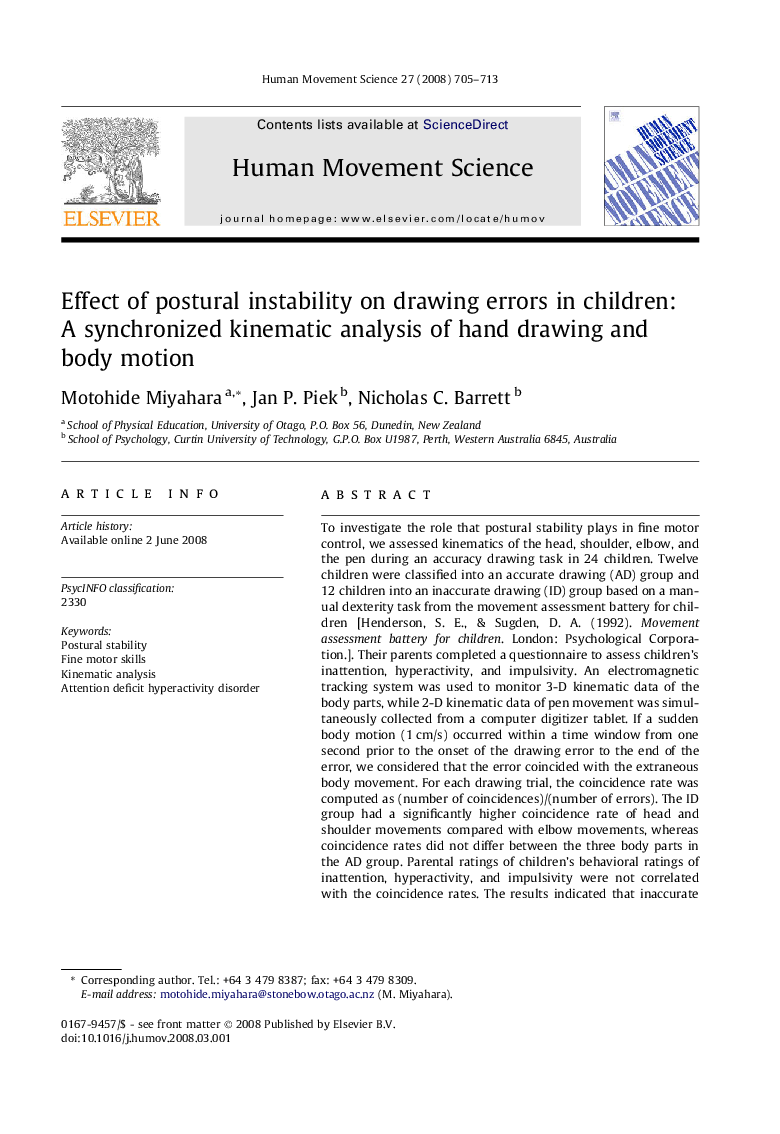| کد مقاله | کد نشریه | سال انتشار | مقاله انگلیسی | نسخه تمام متن |
|---|---|---|---|---|
| 928885 | 922403 | 2008 | 9 صفحه PDF | دانلود رایگان |

To investigate the role that postural stability plays in fine motor control, we assessed kinematics of the head, shoulder, elbow, and the pen during an accuracy drawing task in 24 children. Twelve children were classified into an accurate drawing (AD) group and 12 children into an inaccurate drawing (ID) group based on a manual dexterity task from the movement assessment battery for children [Henderson, S. E., & Sugden, D. A. (1992). Movement assessment battery for children. London: Psychological Corporation.]. Their parents completed a questionnaire to assess children’s inattention, hyperactivity, and impulsivity. An electromagnetic tracking system was used to monitor 3-D kinematic data of the body parts, while 2-D kinematic data of pen movement was simultaneously collected from a computer digitizer tablet. If a sudden body motion (1 cm/s) occurred within a time window from one second prior to the onset of the drawing error to the end of the error, we considered that the error coincided with the extraneous body movement. For each drawing trial, the coincidence rate was computed as (number of coincidences)/(number of errors). The ID group had a significantly higher coincidence rate of head and shoulder movements compared with elbow movements, whereas coincidence rates did not differ between the three body parts in the AD group. Parental ratings of children’s behavioral ratings of inattention, hyperactivity, and impulsivity were not correlated with the coincidence rates. The results indicated that inaccurate drawing was a result of postural instability rather than fidgeting caused by inattention or hyperactivity/impulsivity.
Journal: Human Movement Science - Volume 27, Issue 5, October 2008, Pages 705–713